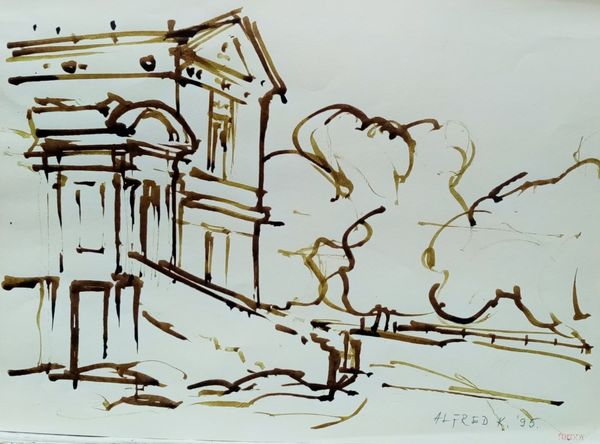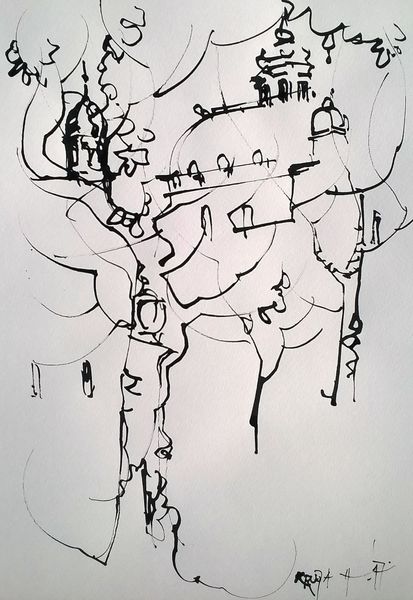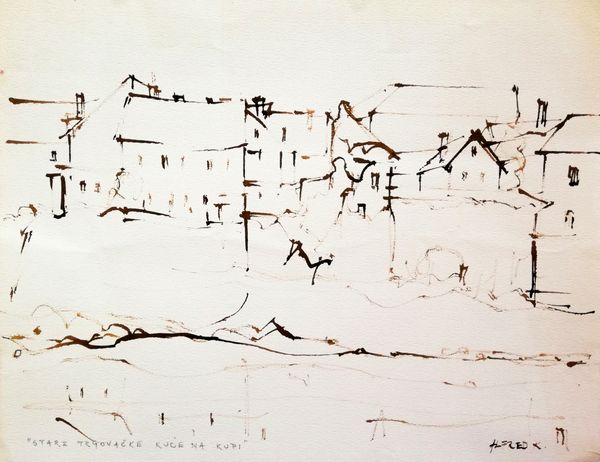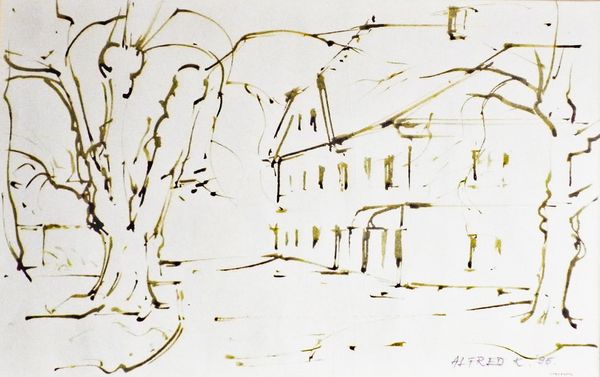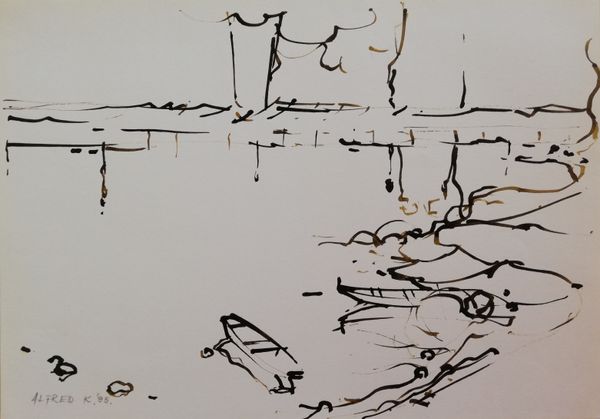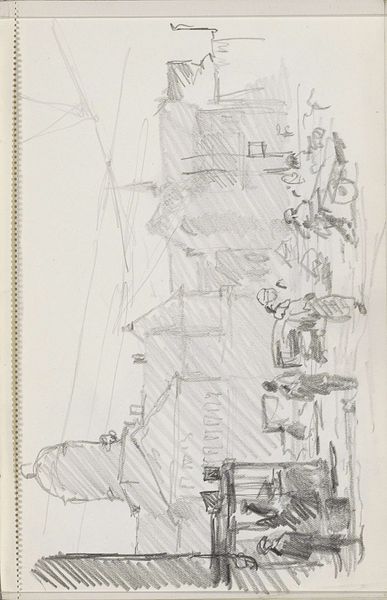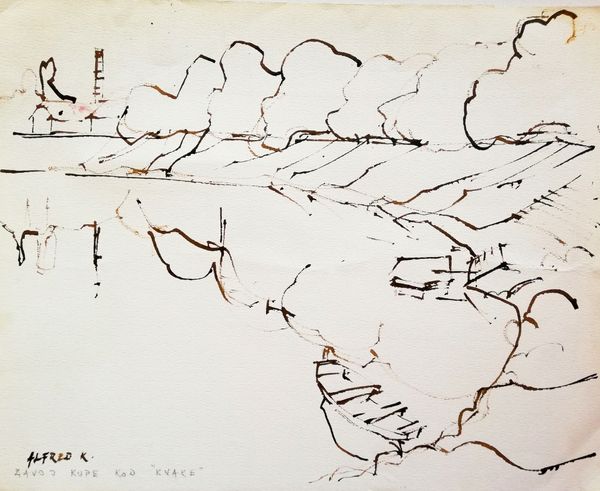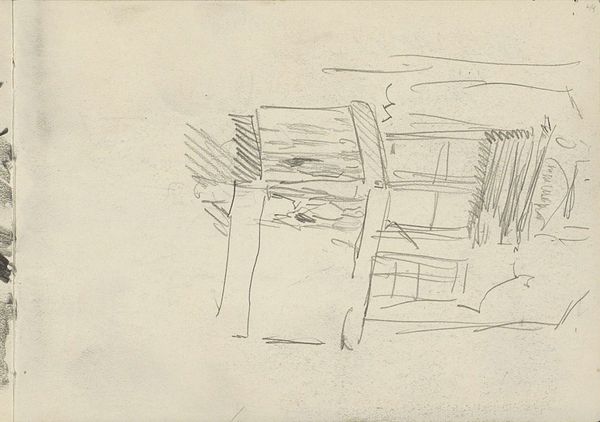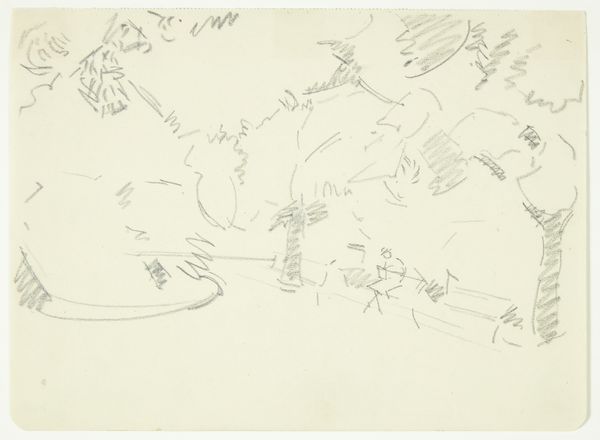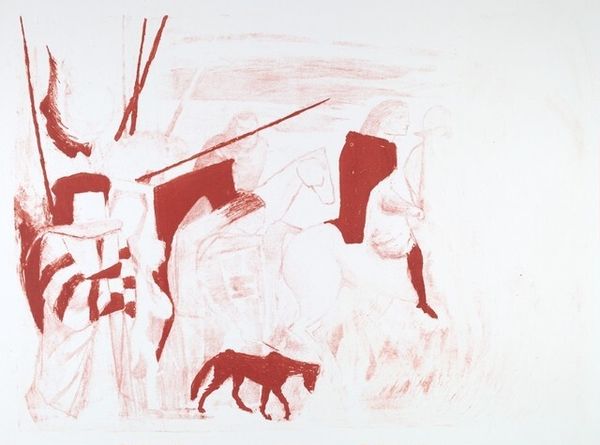
The old slaughterhouse at Gaza in Karlovac (The bank of the Kupa river) 2005
0:00
0:00
drawing, ink
#
drawing
#
ink painting
#
landscape
#
ink
#
line
#
modernism
Dimensions: 40 x 65 cm
Copyright: Creative Commons NonCommercial
Curator: I’m drawn to the almost haunting stillness of this piece. Editor: I agree. I find myself captivated by Alfred Freddy Krupa's ink drawing, created in 2005. It's titled "The Old Slaughterhouse at Gaza in Karlovac," and subtitled "(The bank of the Kupa river)." Curator: "Slaughterhouse" – what an evocative word choice. Beyond its denotation, that term summons generations of shared meanings—a confluence of communal experience through which that word accrues emotional gravity. It’s quite apparent here, through the rapid, skeletal linework. It’s as if the essence of this building and the scene has been distilled through memory. Editor: Absolutely. Context is everything. It would be valuable to consider the social implications of that place, to unearth narratives and realities regarding labor, environmental impact, and cultural history in Karlovac during the 20th and early 21st century. Who benefitted, who was marginalized by such structures? Curator: It’s as if the location becomes a character itself within the narrative. Note how the ink bleeds slightly on the paper. Accidents become intentional as they imply a mutability of the form of the building itself, but simultaneously it calls forward its permanence as a place—a site of cultural memory that can then in turn be projected forward into the future as well. Editor: Indeed. And the minimalist modern style enhances this effect. What societal narratives have been traditionally left outside this "artful" construction? This is a space that might not seem obviously politically-charged, yet that sparseness demands consideration. Does this "beauty" preclude any recognition of prior historical brutalities carried out in slaughterhouses everywhere? Curator: Art certainly encourages engagement with difficult truths. Despite its grim name, it’s a surprisingly lyrical work. A lot of modernism in general operates this way, to engage with history—through and as the passage of time, like visual sediment that yields insights. Editor: Agreed, and that recognition can also provoke self-reflection on the viewer's part too, ideally moving towards a critical self-awareness about inherited perspectives. It does possess beauty and lightness in its strokes, which offers the potential to begin rather than end conversations. Curator: Yes, that visual lightness in execution invites layered considerations, to make something present from something past. Editor: It's made me really think. I think this drawing provides fertile ground for investigating art's relationship to difficult pasts.
Comments
No comments
Be the first to comment and join the conversation on the ultimate creative platform.
